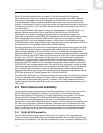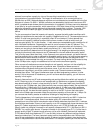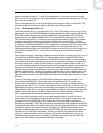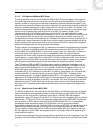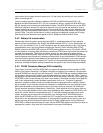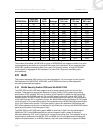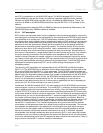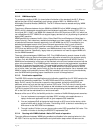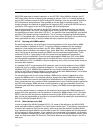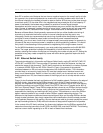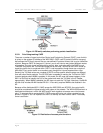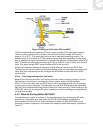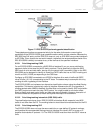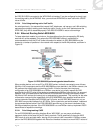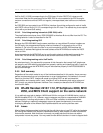
Voice over Wireless LAN Solution Guide v1.0 December 2005
______________________________________________________________________________________________________
Page 39
WSS 2380 regardless of mode of operation on the AP 2330. When WMM is disabled, the AP
2330 has a binary manner of applying user packets to queues. CoS 6 or 7 marked packets go
into the SVP hardware queue on the AP and get SVP treatment, such as zero backoff and other
SVP performance enhancements. Other packets go into the data or best-effort queue. This
closely adheres to the SpectraLink guidelines for supporting SVP, and the WLAN 2300 series is
certified for SVP support under the VIEW program with this configuration.
Note that because ACLs are used to identify SVP packets, this same mechanism can also be
used to support other (non-SVP) voice applications. As long as the ACL is designed to identify
the application and mark it with either CoS 6 or 7, the packet will be transmitted with zero backoff
and other SVP packet handling characteristics. This is one way of supporting WLAN Handsets
2210/11/12 alongside other voice applications on the same radios. Be careful not to prioritize too
many applications this way, or else you defeat the main purpose of prioritization.
2.5.1.5 Queuing with WMM enabled
As mentioned previously, the prioritization and marking behavior is the same whether WMM
mode is enabled or disabled on the AP. The primary difference between the two modes of
operation is how packets are handled in the AP. When WMM is enabled, the special SVP
hardware queue is disabled, and instead Voice, Video, Best Effort, and Background queues are
used. Each queue is serviced according to WMM rules for transmission opportunities. Traffic
marked as CoS 6 or 7 gets placed in the Voice queue and gets preferential transmission
treatment, but not zero backoff. One of the main advantages of WMM over SVP is that WMM
provides graded transmission preferences for multiple services, not just the binary voice/non-
voice distinction of SVP. So WMM is critical for supporting voice, video, and two levels of data on
the same radio networks.
It is possible for SVP to get adequate QoS treatment under the Voice treatment rules of WMM,
though this is not a currently supported configuration. For radios that will be supporting WLAN
Handsets 2210/11/12, WMM must be disabled for now. Nortel therefore recommends that at
minimum, the 2330 b-radios be placed in a unique radio profile with WMM disabled. The a-radios
can be configured with a different WMM setting if desired.
For voice solutions that do not include handsets, WMM can be used but it depends on client
support for WMM as well. In the simplest scenario, laptops that support WMM can effectively
achieve a better level of service and application differentiation for voice applications, at least in
theory, because there are a number of other dependencies involved. Assuming proper application
and NIC driver support, WMM will allow a voice application to get voice treatment over the air
while data gets best-effort treatment over the air. Legacy (non-WMM) devices get background
treatment.
In a more complex scenario, handsets can be isolated to the b-radios with WMM disabled and
laptops with voice applications can be isolated to a-radios with WMM enabled. Even if the same
SSID is used for both (see previous sections concerning single SSID for data plus voice) radio
sets, this can be implemented as a solution for voice and data while meeting the requirements of
SVP for the WLAN Handsets 2210/11/12.
2.5.1.6 Other limitations for QoS
In order to support the WLAN Handsets 2210/11/12, some of the settings on the WLAN 2300
series must be modified or disabled. The first of these is Active-scan. To be officially supported as
a solution with respect to QoS and call quality, Active-scan must be disabled. Disabling Active-
scan impacts how rogue detection is performed on each AP. Nortel expects that this requirement
will be removed in future releases. If your network is a pure handset voice network, this limitation
can be mitigated by disabling the a-radio, which puts it into full-time rogue detection mode. In this
mode, the radio scans both 2.4 GHz and 5 GHz bands because every radio chipset in the AP is
dual band.



